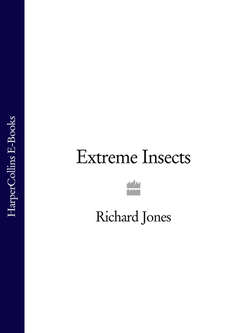Читать книгу Extreme Insects - Richard Jones - Страница 7
Oldest insect
Оглавление| NAME | Rhyniognatha hirsti |
| LOCATION | fossil discovered in Aberdeenshire, Scotland |
| STATUS | oldest known fossil of an insect |
Most insects are very small, very delicate and very edible, so the fossil record they have left behind is extremely poor. The majority end up as prey for other animals, bitten, chewed and digested away. Where their remains are not eaten, there are no large bones to be preserved, and even the toughest of insect shells are made of highly biodegradable compounds. As a result, it takes some pretty special circumstances for insect fossils to form, and they are thoroughly scrutinised when found. Or at least they should be.
Until recently, the oldest acknowledged insect-like fossil was an ancient relative of modern springtails. These are wingless soft-bodied creatures that are not now classed as insects but as a sister group within the subphylum Hexapoda (six-legged arthropods). The fossil was found in 1919 by the Reverend W. Cran in the old red sandstone deposits (also called the Rhynie cherts) at Rhynie in Aberdeenshire, Scotland, which date from 407-396 million years ago. It was finally described in 1926 by three paleontologists, S. Hirst, S. Maulik and D.J. Scourfield, who aptly named it Rhyniella praecursor.
Two years later the rock sample was re-examined by the Australian entomologist Robin Tillyard. He identified what had been thought to be a broken fragment of a Rhyniella head capsule as belonging to a different creature, which he named Rhyniognatha hirsti.
The specimen lay untouched in the Natural History Museum, London, until 2004, when it was examined again by evolutionary entomologists Michael Engel and David Grimaldi. Using modern microscopes, they were able to see the fossilised jaws in much greater detail, and made an astonishing discovery. The shape of the jaws – toothed, broadly triangular, with two bulges where they articulated against other sections of the mouthparts – showed that they were not from some ancient springtail, but from a true insect and probably one with wings.
The Rhynie cherts formed in an area of hot springs and active geysers, which contained fluids rich in dissolved silica. As the water cooled the silica crystallised out of the water to form the fossils for which the area is now renowned. Hot water is very damaging to insect wings and other soft tissues, so it is not surprising that only the tough jaws of this insect have been preserved.
